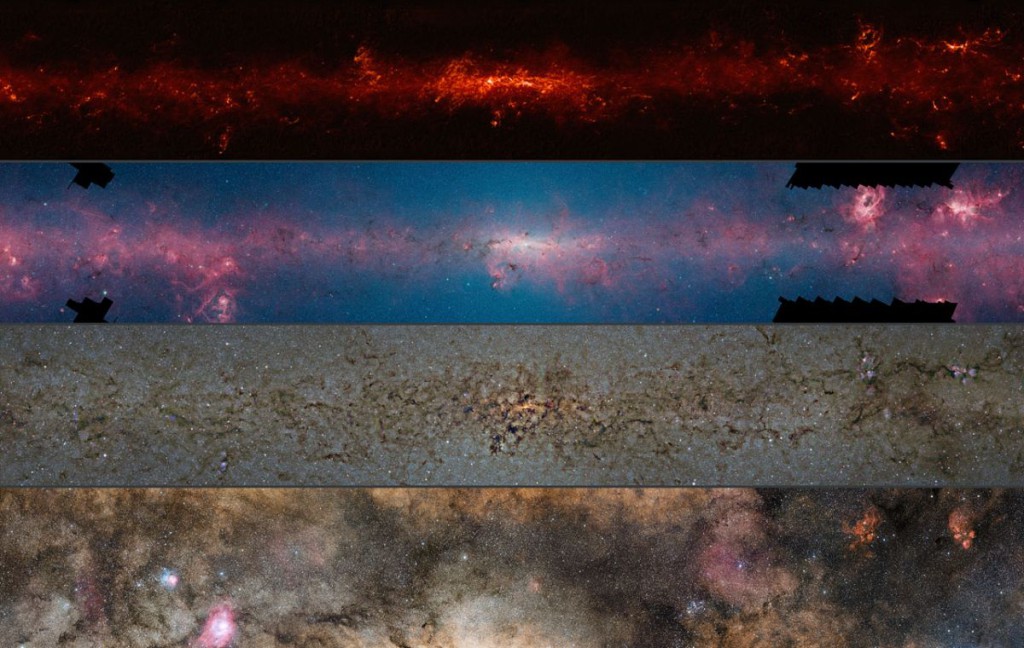Astronomers have taken advantage of a unique telescope, which allowed them to capture an incredibly detailed image of the southern region of our Milky Way galaxy. The telescope, Atacama Pathfinder EXperiment (APEX), is located on the Chajnantor Plateau in Chile.
The images captured by the astronomers give us an unprecedented look at the cold dense gas distribution along the Milky Way’s galactic plane. Check out the spectacular images below to see the Milky Way galaxy in a never before seen way.

This comparison shows the central regions of the Milky Way observed at different wavelengths. Via ESO
As you probably noticed, these images are not exactly the wondrous swirls that we normally see when looking at other spiral galaxies. The reason for this occurrence is because we are looking at the galactic plane head on.
There have been other telescopes that have helped map out the northern region of the Milky Way galaxy, such as the James Clerk Maxwell Telescope. However, this new mapping of the southern region makes way for the inclusion of the Galactic Centre.
The Atacama Pathfinder EXperiment is comprised of very sensitive instruments, one of which is known as the LArge BOlometer Camera (LABOCA), which is used to measure incoming radiation. LABOCA conducts these measurements by detecting subtle spikes in temperature and emissions of stellar light that are obscured by cold dark dust bands, eventually revealing previously hidden portions of the Milky Way galaxy.
Commenting on the discovery was Timea Csengeri of the Max Planck Institute for Radio Astronomy in Bonn Germany, stating that “ATLASGAL provides exciting insights into where the next generation of high-mass stars and clusters form. By combining these with observations from Planck, we can now obtain a link to the large-scale structures of giant molecular clouds.”
These new images have raised some interesting questions, namely, how do we even know what our galaxy looks like? Due to the fact that we are living inside it, there is no real way for us to get an accurate look at the Milky Way.
Trying to take an image of the Milky Way is like trying to take a picture of an entire house while you are inside it. Our galaxy is around 100,000 light-years across, meaning it would take us quadrillions of years to travel to its edge to get a picture of the galaxy from the outside.
However, we have been able to render fairly accurate representations of our large spiral galaxy. By recognizing similar structures, we have been able to identify which galaxies look most like our own. Unfortunately, we may never have a true picture of what the galaxy looks like. These new images are nonetheless a great step in the right direction towards a more comprehensive image of our galaxy.
I recommend that you check out this video below from Mark Reid, Senior Radio Astronomer at the Harvard-Smithsonian Center for Astrophysics, as he maps out the Milky Way from the inside out.